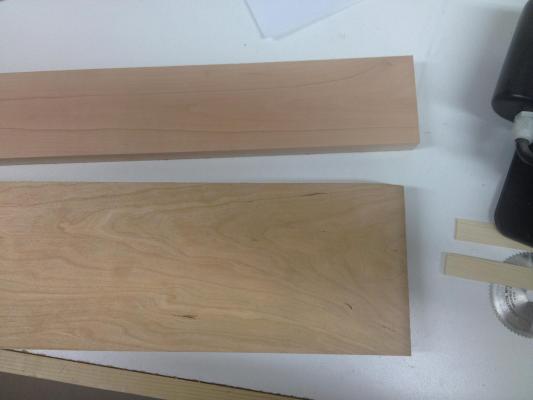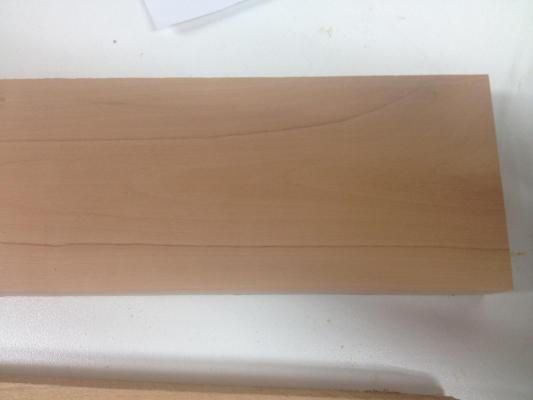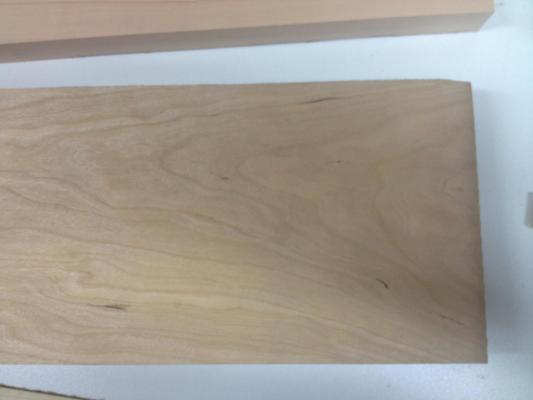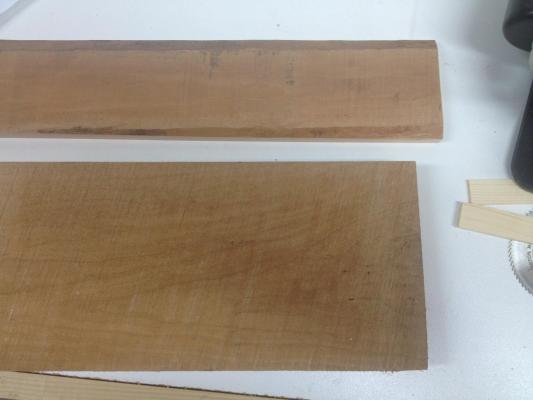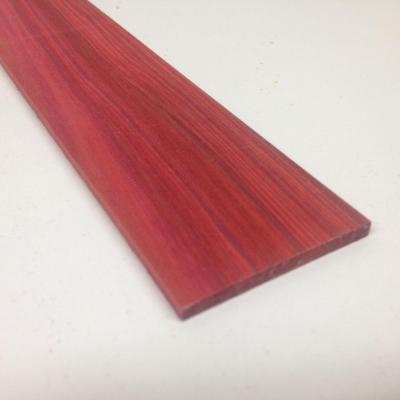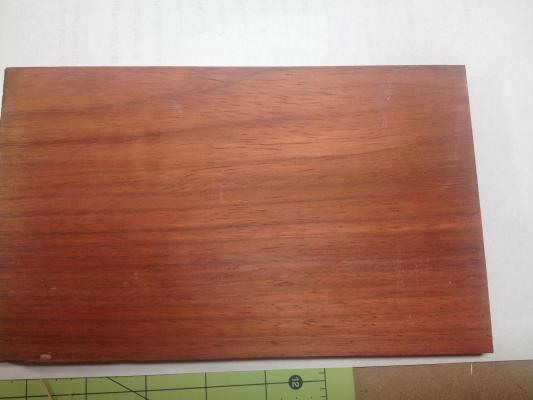-
Posts
202 -
Joined
-
Last visited
Content Type
Profiles
Forums
Gallery
Events
Everything posted by Jason
-
Your build is looking really good Greg. Where you are talking about masts and rigging, you mentioned the tension of the rigging. There is a really great product available called E-Z line. It is an elastic polymer line that will stretch very far without stressing your attachment points. E-Z Line: http://www.berkshirejunction.com/ezline.html On there dealers page, it looks like there are four dealers in Australia that carry it. With this line, you can attach it to your most delicate spars with a dab of glue, run it taught to the next attachment point and then stretch it all the way to the deck. The attachment points will not bend. Really great stuff.
-
Your build is looking really nice and clean!
- 452 replies
-
- cheerful
- Syren Ship Model Company
-
(and 1 more)
Tagged with:
-
Hello Santiago, I do not have experience in either of the kits or manufacturers that you have available to you. However, one thing to look at between those two kits, is what scale you would like to try first. 1:35 is a rather large scale for model ships. The details will be larger and perhaps easier to work on than the 1:65 kit. 1:65 is not exactly a small scale either, but some of the detail may be easier on the larger 1: 35 scale. Good luck and happy modeling!
-
Neat project! The lighting is a really nice touch.
- 106 replies
-
- Japanese boat
- Wasen
-
(and 2 more)
Tagged with:
-
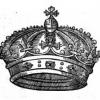
Drawing with quota, exist?
Jason replied to Jhenrique's topic in CAD and 3D Modelling/Drafting Plans with Software
There are many books that go into great detail with ship design and construction. The AOS series or anatomy of the ship series is good in that regard, also publications from Ancre and Seawatch Books. Ancre Seawatch Example of AOS book, HMS Dreadnought. -
Looking good! I really like your mounting solution, and your stern gallery came out very good.
-
Hi Greg, It is great to see someone else doing this kit as well. You have some fantastic research images here! Unfortunately, when I visited the Independence Seaport Museum, they did not have anything other then the drawings that I posted in my log. If I remember correctly, they did have the contract book, which may contain some interesting details. I hope to get back to this sometime soon. The day after I went to the Seaport Museum I moved my family out of state, and still have not set up a permanent model workshop! One of these days... I look forward to following your progress.
-

Brig Eagle by robnbill - 1:48
Jason replied to robnbill's topic in - Build logs for subjects built 1801 - 1850
Great Details! It is really amazing to see the details of human interaction on models. The map and the letter are the two items that really bring the subject to life. I am looking forward to seeing more! -
Hi Tim, I just wanted to add two cents to the discussion with a couple of pictures. The first piece of wood that you asked about could potentially be pear. I would find it hard to believe that a very experienced carpenter, your grandfather, could not identify it if it were actually Cherry. Cherry being very easy for most people to identify if they have ever worked with wood. That being said, stranger things have happened. Here are a couple of pictures for example from my shop: The top piece is Swiss Pear, the bottom larger piece is Cherry with a little bit of figure to the grain Close Up of Swiss Pear Close Up of Cherry Rough Boards, Swiss Pear is the small piece, notice how tight the grain is in comparison Also, the red piece of wood, I do believe to be Redheart. Purpleheart, is as it's name implies, purple. Also, Redheart has a very specific pattern to it's grain, which your piece of wood exhibits. Again, in Pictures... Redheart Padauk I hope that this helps and adds to the discussion
-
You are off to a good start. This kit is really fun to build. One thing to watch out for, the top of the stem is prone to breaking. A lot of people who have built this kit, myself included, have broken that stem off. If it does come off, it is not too difficult to fix, but best to be aware of the potential problem. Happy building!
- 222 replies
-
- 18th century longboat
- model shipways
-
(and 2 more)
Tagged with:
-
You are creating a very beautiful model! Fantastic work.
- 974 replies
-
- rattlesnake
- mamoli
-
(and 1 more)
Tagged with:
-
That capstan came out really great Ken!
- 481 replies
-
- rattlesnake
- model shipways
-
(and 1 more)
Tagged with:
-

HMS Naiad 1797 by albert - FINISHED - 1/48
Jason replied to albert's topic in - Build logs for subjects built 1751 - 1800
Beautiful work Albert! Could you give a lower angle shot of the transom? Your moldings around the lights look very well done. -
Great model all around! Nice work. The life boat is a nice model in and of itself. I really like the detail, such as the baskets with rigging blocks and buckets on the deck!
-
Amazing! Absolutely fantastic, making the model tell the story of how the men worked the ship is a lofty goal. One that you are meeting.
-

Paints ain't just paints...
Jason replied to Izzy Madd's topic in Painting, finishing and weathering products and techniques
I use Vallejo on wood as well. I know Chuck Passaro uses Windsor and Newton, which can be bought at nearly any craft store. What is more important on wood, than paint brand choice is the surface preparation and sealing. Vallejo offers perhaps the greatest variety of colors offered by a manufacturer, and are easily mixable adding even more color choices. However, if you do not need or want that huge availability of selection, any decent acrylic paint will do well on wood. Assuming the proper preparation before painting. -

Paints ain't just paints...
Jason replied to Izzy Madd's topic in Painting, finishing and weathering products and techniques
I use them. Especially for white. It helps a lot with the coverage, and they are generally cheaper per fl oz. / mL so they come in larger bottles that last a long time. -

Paints ain't just paints...
Jason replied to Izzy Madd's topic in Painting, finishing and weathering products and techniques
George, You can get them at most local hobby stores here in the US. If you need an online dealer, Free Time Hobbies is a good one, or you can buy them on amazon. -

Paints ain't just paints...
Jason replied to Izzy Madd's topic in Painting, finishing and weathering products and techniques
I use Vallejo acrylics. I find them to be very low odor, clean up nicely with only water, and they cover great with a base coat of primer. Not sure if this is near you, but for example: http://www.snmstuff.co.uk/vallejo-products/ -
I think that the answer is both yes, and no. The answer being dependent on the customs of the individual ship, squadron, navy, country, and even that most granular of data points, the individual sailor. There is clearly documentation to assert both positions. Most likely there was a time and place for being barefoot, and likewise for wearing shoes. However I think there may be something of value that I can add to the discussion in relation to the realities of the footwear in question. I participate in living history events, a.k.a. reenactments, focusing on the late 18th century. Mostly I give an impression of a private soldier in King George III's army. Admittedly, this gives me no special knowledge as to what it was like to sail on the ships of the time, but there is an applicable link. Period shoes. I wear replica late 18th century, early 19th century shoes when at these events. Here are a few things to ponder when it comes to wearing shoes in period. Shoes of the time period are made of 100% natural materials. Although, this may seem like an obvious point, any modern could easily overlook just how time consuming it is to maintain a daily use item made from natural materials. Especially items as prone to heavy use as shoes. It takes only one long day to noticeably wear period shoes. A long day and a hard march over even a little bit of rough surface can destroy a pair shoes. Though the deck of a ship is far from rough terrain, the constant flexing involved in maintaining one's balance on a pitching deck would definitely strain the materials in the shoes. The need for maintenance and repair is clearly shown in the link to JackTar's blog above, and here : http://usscm.blogspot.com/2014/02/slip-shod-truth-about-early-navy-shoes.html Modern shoes have a complex structure embedded in the soles called a shank. This structure gives our arches support, and helps to prevent Plantar Fasciitis, as mentioned above. Period shoes have no such structure. The soles are only a few pieces of thick leather stitched together. The heel is assembled with several more layers of the leather, and bound to the sole with iron nails and an iron heel plate that looks like a miniature horse shoe. The shoes give no support to the structure of your foot, especially when one's foot is on something as narrow as a rope. A sailor may have used the triangle in between the heel and the sole to trap the lines, but the heel would have been susceptible to being ripped off of the sole. Every two days of use, the soles need to be roughed up in order to keep them safe. The leather on the bottom of the sole quickly takes on a polish with use and moisture, making trekking up even a modest grade on grass next to impossible without hob nails, or using the heel plate to dig into the ground. Imagine what that would do to the deck of a ship. A shoe that was roughed up in the morning to help with traction can be worn smooth again by noon. Foot rot... It does not take too much imagination to ponder what happens to one's feet when perpetually kept in tight leather cases that do not breath like today's shoes. Again, I think that the answer was highly variable and dependent on a variety of factors. Probably most sailors wore shoes sometimes, and not on other occasions. The only experience that I have with period vessels was on-board the US Brig Niagara, where I observed that most of the crew wore those shoes that are supposed to simulate being bare foot. You know, those crazy shoes with individual toes. Not judging, if they work, they work. I hope that this adds to the discussion, and gives some more information for people to ponder.
-
Thank you for posting this Tadeusz, this is a great thread with some really outstanding photographs. This thread could be the beginnings of a very interesting book on period shipbuilding, with context given through the photos.
-

US Brig Syren by Gahm - Model Shipways
Jason replied to Gahm's topic in - Kit build logs for subjects built from 1801 - 1850
Looks great Thomas! -

HMS Leopard by gobi71 - 1/300 scale
Jason replied to gobi71's topic in - Build logs for subjects built 1751 - 1800
WOW! Outstanding work at any scale, doubly so at 1:300! Bravo! -
Perhaps not adding to the conversation in direct response to how flags were flown on a one or two masted vessel, but here is a period example of a ship model bearing flags for launching day: Mermaid, (32) of 1784 NMM reference SLR0318 Link: http://collections.rmg.co.uk/collections/objects/66279.html Also on page 63 of Robert Gardiner's The Sailing Frigate: A History in Ship Models
About us
Modelshipworld - Advancing Ship Modeling through Research
SSL Secured
Your security is important for us so this Website is SSL-Secured
NRG Mailing Address
Nautical Research Guild
237 South Lincoln Street
Westmont IL, 60559-1917
Model Ship World ® and the MSW logo are Registered Trademarks, and belong to the Nautical Research Guild (United States Patent and Trademark Office: No. 6,929,264 & No. 6,929,274, registered Dec. 20, 2022)
Helpful Links
About the NRG
If you enjoy building ship models that are historically accurate as well as beautiful, then The Nautical Research Guild (NRG) is just right for you.
The Guild is a non-profit educational organization whose mission is to “Advance Ship Modeling Through Research”. We provide support to our members in their efforts to raise the quality of their model ships.
The Nautical Research Guild has published our world-renowned quarterly magazine, The Nautical Research Journal, since 1955. The pages of the Journal are full of articles by accomplished ship modelers who show you how they create those exquisite details on their models, and by maritime historians who show you the correct details to build. The Journal is available in both print and digital editions. Go to the NRG web site (www.thenrg.org) to download a complimentary digital copy of the Journal. The NRG also publishes plan sets, books and compilations of back issues of the Journal and the former Ships in Scale and Model Ship Builder magazines.



